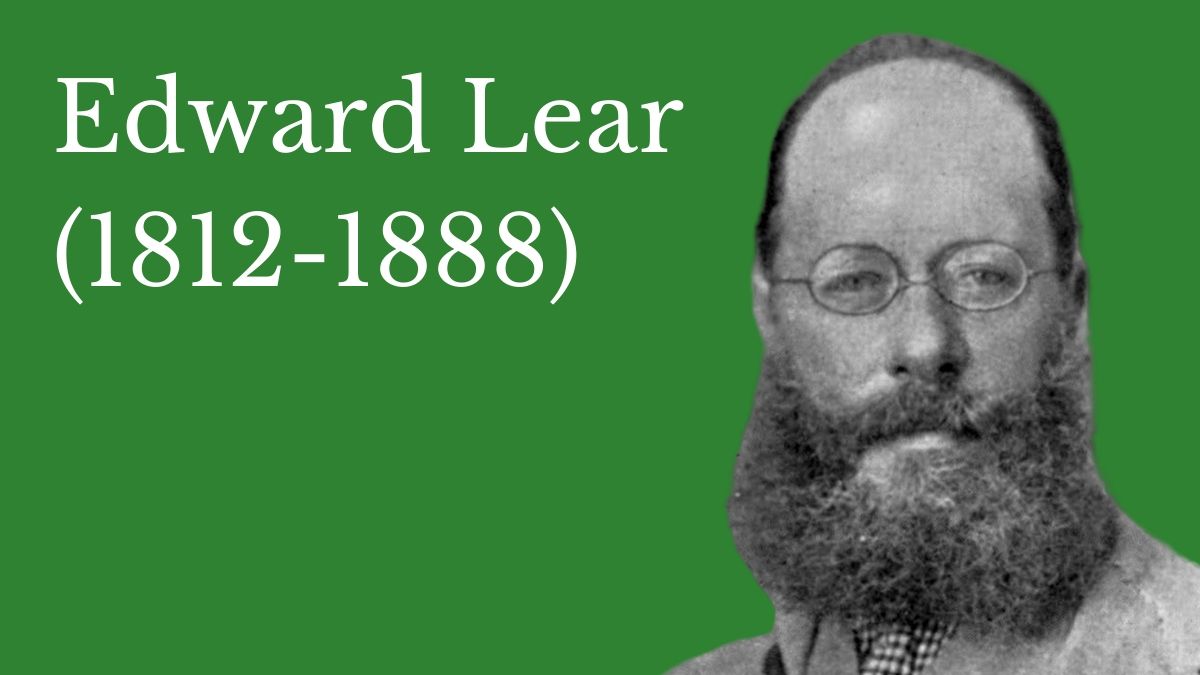It’s been said that everyone is a little bit Irish on St. Patrick’s Day. Well, March 17th is soon upon us and we think reading some limericks is a great way to celebrate!
About Limericks
- Poems published in an eighteenth century Mother Goose’s Melodies are considered to be some of the earliest limericks. Some speculate the poetry form may have originated in Limerick, Ireland, but it’s unknown for sure.
- Wherever limericks came from, Edward Lear became one of the best known for its style during the 19th century. Interestingly, Lear never referred to his poems as limericks, but simply called them nonsense rhymes.
- Limericks are often silly and may contain near rhymes, eye rhymes, multiple meaning words, creative spelling or made-up words.
- Limericks were never considered cultured poetry. In fact, some were very bawdy and considered quite obscene for the sensitive ears of nineteenth century ladies.
- Limericks follow the rhyme scheme (rhyme pattern): AA, BB, A
- The A lines rhyme with each other and the B lines rhyme with each other. (Of course, in a limerick, it might be an eye rhyme or a near rhyme rather than a perfect rhyme.)
- The A lines (typically) have 8 or 9 syllables.
The B lines (typically) have 5 or 6 syllables
About Edward Lear (1812-1888)
- Edward Lear was born May 12, 1812 in Holloway, England. He was the youngest to survive of the twenty-one children born in his family.
- In 1816, when Edward was four years old, he and his older sister, Ann, had to leave the family home because of the family’s limited financial resources. Ann was 21 years older and raised Edward as a mother figure.
- At the age of sixteen, he started to get paid for his art. At the age of nineteen, Lear published his first book of illustrated parrots. His bird paintings were compared to naturalist John James Audubon.

- In 1846, he illustrated his own poems with simple black line drawings in A Book of Nonsense, one hundred years before Shel Silverstein wrote and illustrated his popular poems.
- Lear also enjoyed taking “poetic license” in his poems by making up his own silly words. He wrote about the Quangle-Wangles, Pobbles, and Jumblies a century before Dr. Seuss.
- Lear loved to travel. In 1848, he traveled to Greece, Egypt, India, and Ceylon where he painted the exotic places he visited.
- Lear was very musical and liked to set his poems to music. He could play the accordion, flute, and guitar, but especially the piano.
- Lear had many medical conditions throughout his life. He suffered from grand mal epileptic seizures, bronchitis, asthma, and later in life, partial blindness.
- Lear never married. He died on January 29, 1888 at 75 years of age in Liguria, Italy.
The Nonsense Rhymes of Edward Lear (Limerick Examples)
All of the following limerick examples were written and illustrated by Edward Lear. The cartoony style of his nonsense books is clearly very different from his parrot paintings!
The Young Man and the Cow
There was a young man who said, “How (A)
Shall I flee from this horrible cow? (A)
I will sit for a while, (B)
And continue to smile, (B)
Which may soften the heart of that cow.” (A)

The Young Lady of Clare
There was a young lady of Clare,
Who was madly pursued by a bear;
When she found she was tired,
She abruptly expired,
That unfortunate lady of Clare.

The Young Lady of Wales
There was a young lady of Wales,
Who caught a big fish without scales;
When she lifted her hook,
She exclaimed, “Come and look!”
That ecstatic young lady of Wales.

The Old Man with the Beard
There was an old man with a beard,
Who said, “It is just as I feared!”
Two owls and a hen,
Four larks and a wren,
Have all built their nests in my beard!”

The Man of Calcutta
There was an old man of Calcutta,
Who perpetually ate bread and butter;
Till a great bit of muffin,
On which he was stuffing,
Choked that old man of Calcutta.

The Man of Calcutta is a limerick example where Lear used near rhyme, rather than a perfect rhyme.
- Calcutta/butter is a near rhyme
- muffin/stuffing is also a near rhyme
If you’d like to read more limerick examples, check out our book, The Nonsense Limericks of Edward Lear.



